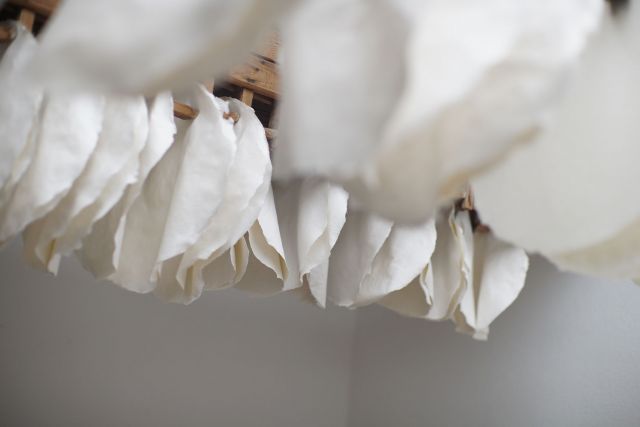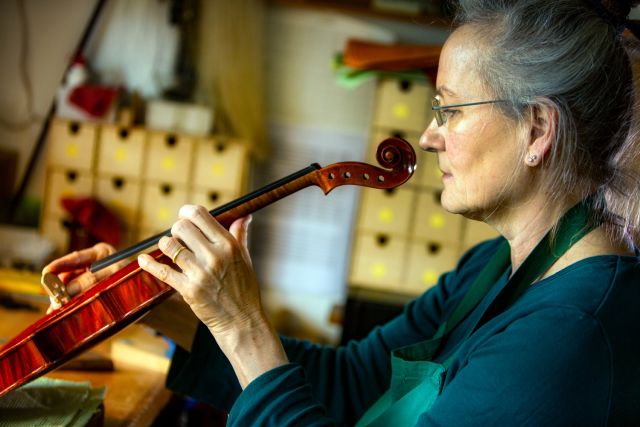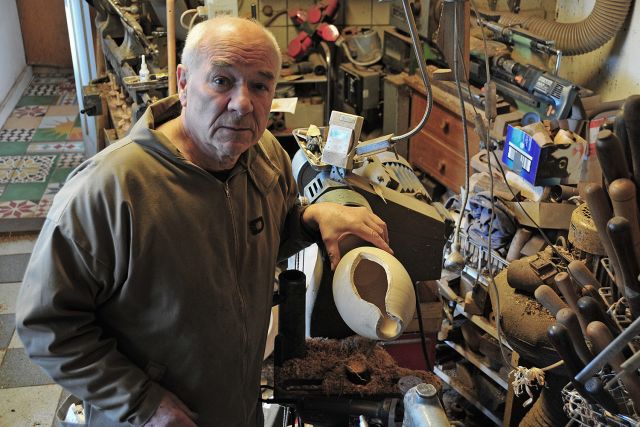This dark textile, crafted from a combination of silk, cashmere, and silk steel, is woven using a special fanreed. Weaving reeds are normally set at regular intervals to make sure threads are spread out regularly and symmetrically. A fanreed sets the wires at an angle, enabling Lucia Schwalenberg to abandon the rectangular order of weaving. By lifting and lowering the fanreed on the loom, the warp threads are undulated.
Height 220 cm
Width 60 cm
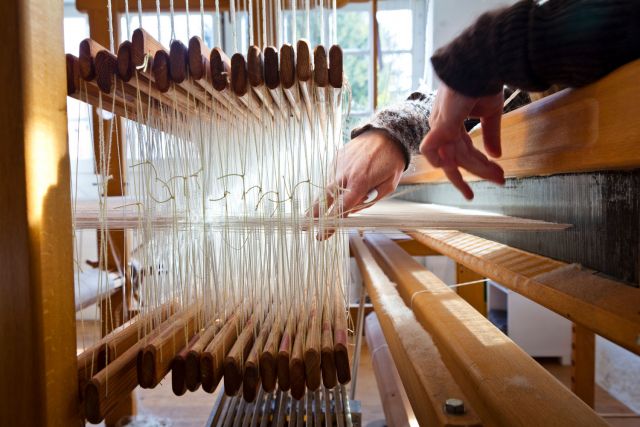

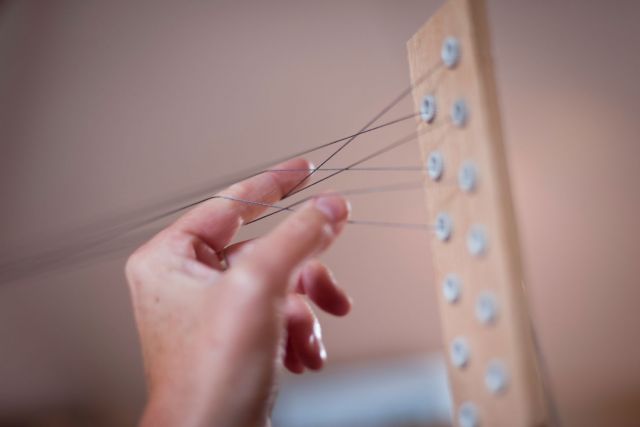
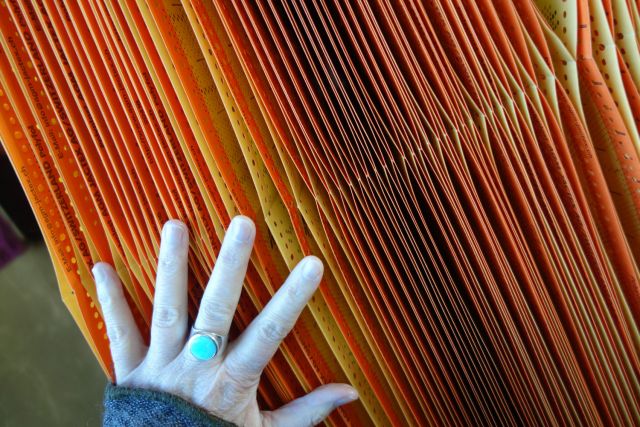
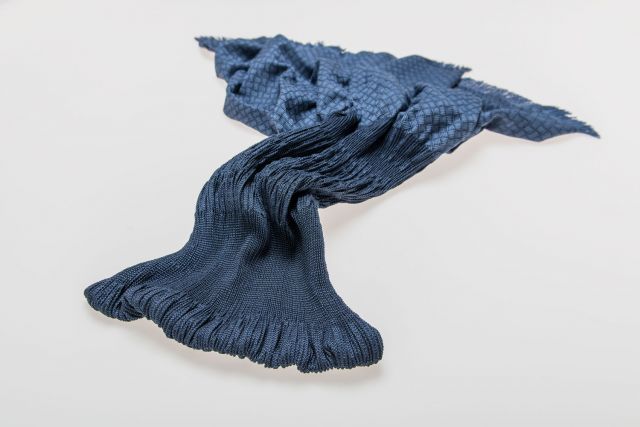
Lucia Schwalenberg
- Weaver
- Wennigsen, Germany
- Master Artisan
- Recommended by Zentralverband des Deutschen Handwerks
By appointment only
+49 (0)5103706424
Interweaving culture and history
- • Lucia connects the past and the present in her works
- • She specialises in jacquard weaving techniques
- • She both practices and teaches
It was the complexity of weaving and its cultural-historical associations that initially sparked Lucia Schwalenberg’s interest in the craft. Those links are defined by the close interconnection between different weaving techniques and the development of human civilizations across the globe. After an internship with a Swedish master weaver, there was no doubt about her path anymore. Consequently, in parallel to studies in journalism and textile design, she completed the master weaver's examination. Afterwards Lucia continued to deepen her understanding of jacquard weaving techniques at the Textile Centre Haslach, the Fondazione Lisio Florence and at Digital Weaving in Norway. Her creations have since been internationally awarded and nominated. Today, Lucia teaches at the University of Osnabrück and is working on her dissertation.
Read the full interviewWorks
Photo: ©Heiko Preller

Photo: ©Heiko Preller
These pleated fabrics are crafted from a combination of Mulberry-silk, elastane and wool-crepe. Lucia Schwalenberg’s work focuses on visible and tangible structures. She creates textiles characterised by shifts and intermeshed patterns as well as their sculptural quality, thus introducing entirely new patterns, a trademark of her creations.
Height 90 cm
Width 30 cm

Photo: ©Heiko Preller
This unusual combination of silk, wool-crêpe and finest copper-yarn transmutes fabric. It is woven into a three-dimensional form.
Height 220 cm
Width 30 cm

Photo: ©Ralf Orlowski
Ikat is a dying technique used to give warp threads subtle and fluent colour graduations. Lucia Schwalenberg combines ikat dying with a fanreed during the weaving process to achieve undulated, pulsing colour waves. Weaving reeds are normally set at regular intervals to make sure threads are spread out regularly and symmetrically. A fanreed sets the wires at an angle, enabling Lucia to abandon the rectangular order of weaving.
Height 220 cm
Width 60 cm

Photo: ©All rights reserved
A jacquard loom is used to craft this Beiderwand textile, a complex partly double cloth fabric. This room divider is developed by using a hand drawn sketch and set into rapport. Beiderwand, historically known as Alkoven curtains, are traditionally found in Nordic farmhouses of Schleswig-Holstein in north Germany and south Denmark. Originating in the 18th and 19th century, this fabric traditionally includes pictorial motifs.
Height 240 cm
Width 70 cm





